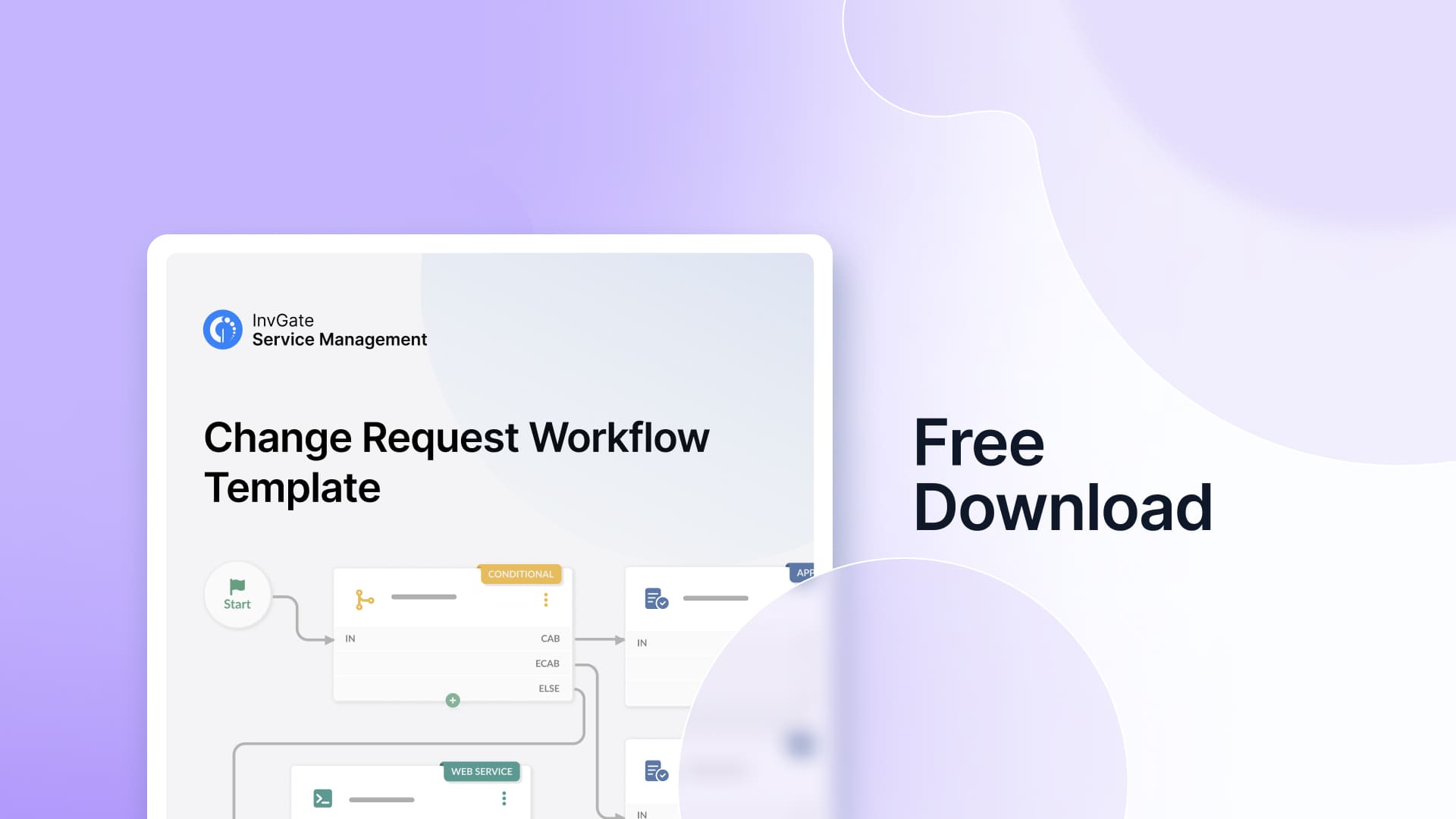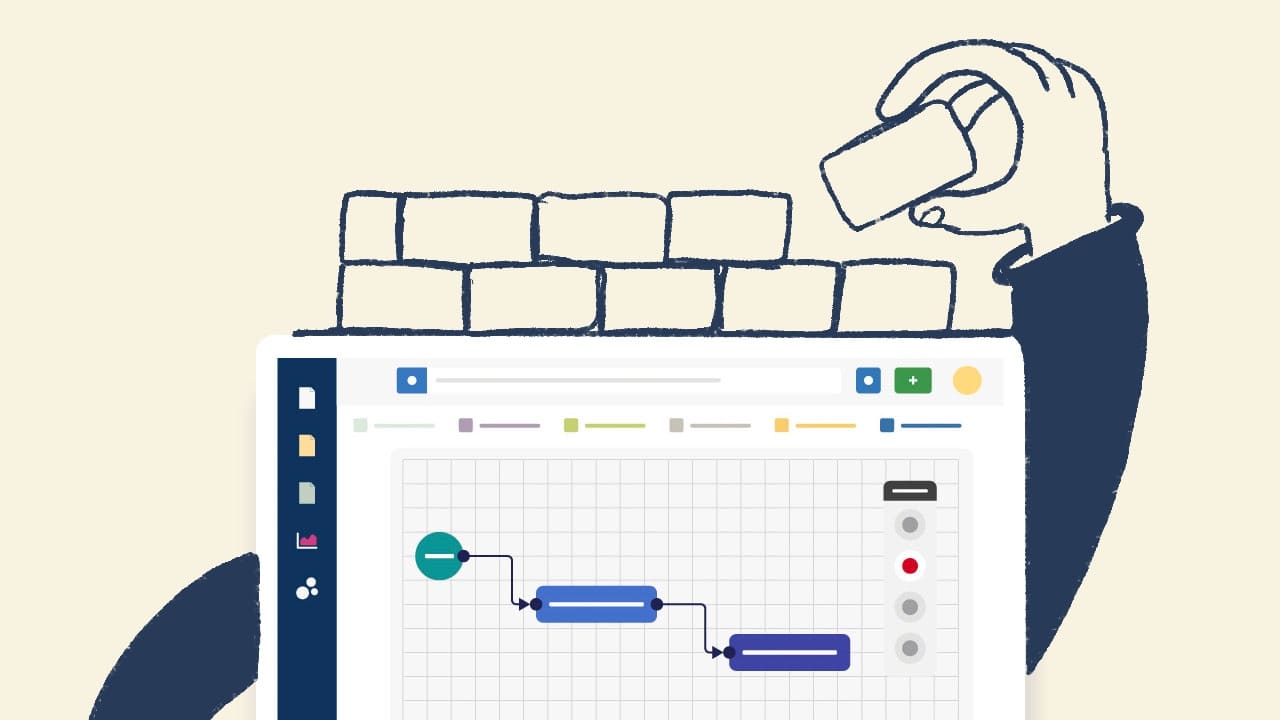

Change is an inherent part of technology and Service Management — constantly evolving to meet new challenges and improve efficiency. In the realm of IT operations, the term "change request" is a pivotal tool for facilitating these necessary adaptations, guiding the transition of services and systems with precision and control.
The concept of a change request spans multiple disciplines. However, keep in mind that this article zeroes in on its specific application within the service desk environment.
Here, we'll explore the definition, the critical elements of a change request form, and offer a detailed look at a free workflow template available through InvGate Service Desk , tailored for those in the IT sector aiming to refine their Change Management processes.
If you're an IT professional looking to streamline your change request processes, read on to discover how our built-in workflow setups can simplify and enhance your operations!
A change request is essentially your formal request ticket for tweaking or modifying anything in your system or IT environment. Think of it as a necessary checkpoint that ensures no changes are made without the right checks, balances, and sign-offs.
Whether it’s because of new business needs, fixing existing problems, or simply making something better, a change request helps you outline what needs to be done and why.
In the world of IT Service Management (ITSM) , these requests are crucial for keeping your IT infrastructure updates smooth and trouble-free, ensuring they don’t mess up your existing services.
Let’s see an example in which you might use a change request. Imagine a company planning to update its CRM (Customer Relationship Management) software to add new features and improve user experience. The IT department submits a change request detailing the need for the update, outlining the benefits such as enhanced data analysis tools and a more intuitive user interface.
This request goes through several stages: it's first reviewed to assess its impact on current systems and workflows, then approved by the necessary managers or a Change Advisory Board , scheduled for a time that minimizes disruption to daily operations, and finally implemented by the IT team.
Post-implementation, a review is conducted to ensure the update meets its objectives and to address any issues that arose during the transition. This structured approach ensures the update is managed smoothly and effectively, keeping all stakeholders informed and engaged throughout the process.

Change requests aren't just procedural necessities, but tools that can boost the effectiveness and reliability of your help desk. By formalizing how changes are proposed, assessed, and implemented, these requests can bring a lot of benefits to your IT operations.
Here’s how they make a difference:
A request for change typically contains several crucial pieces of information including the reason for the change, the detailed description of the proposed changes, the impact analysis, the resources required, the proposed timeline, and any associated risks. This documentation is vital for the approval and prioritization of the change.
To help you get started, we're providing a free change request workflow template, which contains a static version of the process built into InvGate Service Desk.
This template provides a visual representation of the entire workflow and serves as an excellent tool for understanding and training your team on the process. In the next section, we'll break down this template into its various components and describe how each part functions within our software.
The first step in the change request workflow is crucial as it initiates the entire process. This step includes the change request form. Here’s a detailed look at each component of the form and how it serves the overall process.
The form starts with the field “Type,” where users can select the urgency and importance of the change. The options are Standard, Normal, and Emergency . Standard might refer to routine updates with low impact, Normal for regular changes that need standard approvals, and Emergency for critical changes that need to be implemented urgently to address significant issues or risks.
The field “Reason for Change” is a rich text field which allows the requester to provide a detailed explanation of why the change is necessary. This could include enhancements, fixes, or updates. The description helps in assessing the impact and urgency of the request during the approval process.
The next field is "Date and Time for the Change," where the requester specifies when they propose the change to be implemented. This helps in planning and scheduling the change to minimize disruption to business operations.
"Activity Plan" requires the requester to outline the steps that will be taken to implement the change. A clear and concise plan helps ensure that the implementation team understands the tasks involved and can execute them efficiently.
The field "Rollback Plan" asks for a contingency plan in case the change needs to be reversed. A rollback plan is essential to quickly restore previous configurations if the new change leads to unforeseen problems.
Finally, the form includes a file attachment field called "Documents," which allows the requester to attach any relevant documents, such as technical specifications, compliance documents, or detailed plans.
Once the change request form has been filled, the workflow continues:
This workflow not only helps in managing changes efficiently but also ensures that all changes are well-documented, approved by relevant authorities, and communicated properly across the organization.
By following this structured approach, IT departments can minimize disruptions, manage risks more effectively, and ensure compliance with organizational standards and external regulations.
Two of the main takeaways of this article are the importance of a controlled process for implementing changes and the benefits of using a systematic approach to manage these changes efficiently through change request workflows.
By integrating these principles, and using tools like InvGate Service Desk to automate the process, IT teams can enhance service reliability and performance while meeting compliance and business needs.
Remember, the Change Management process is crucial for adapting to new challenges and ensuring the continuous improvement of IT services. And the change request kicks off that process.
To have a feel of what this looks like take your 30 day free trial and explore the tool in your own time and space!